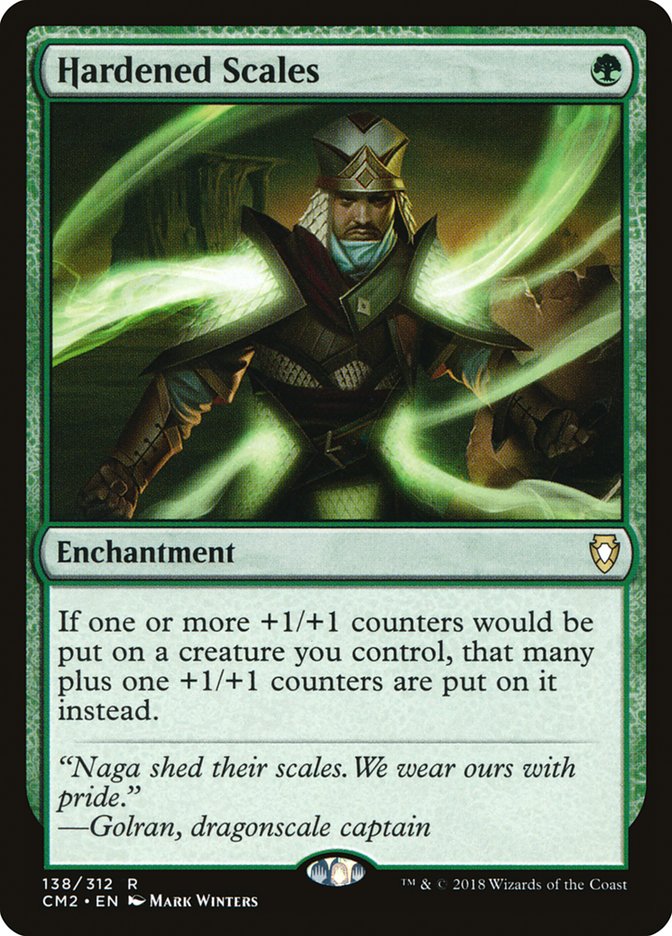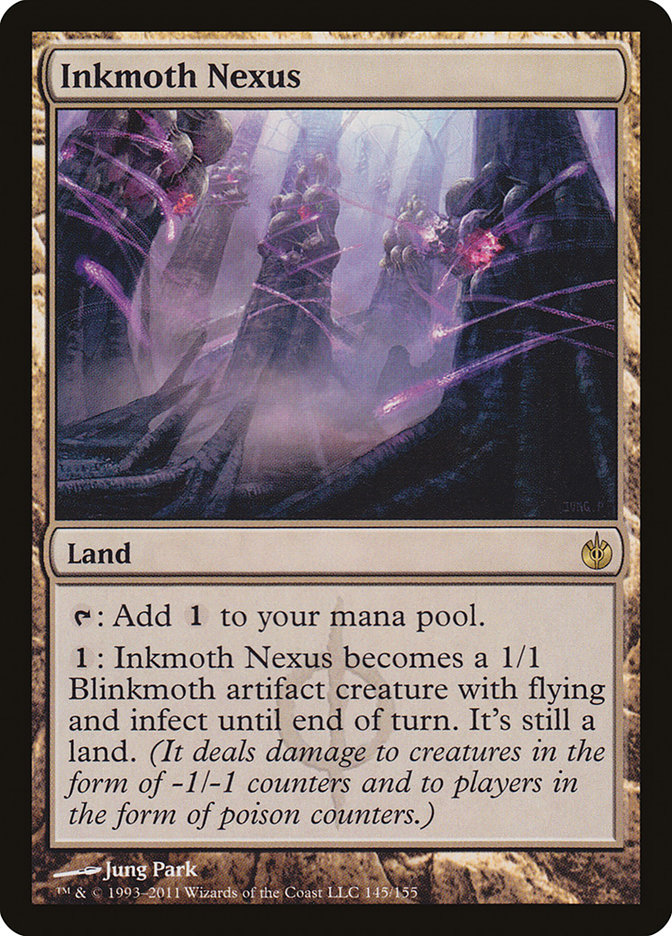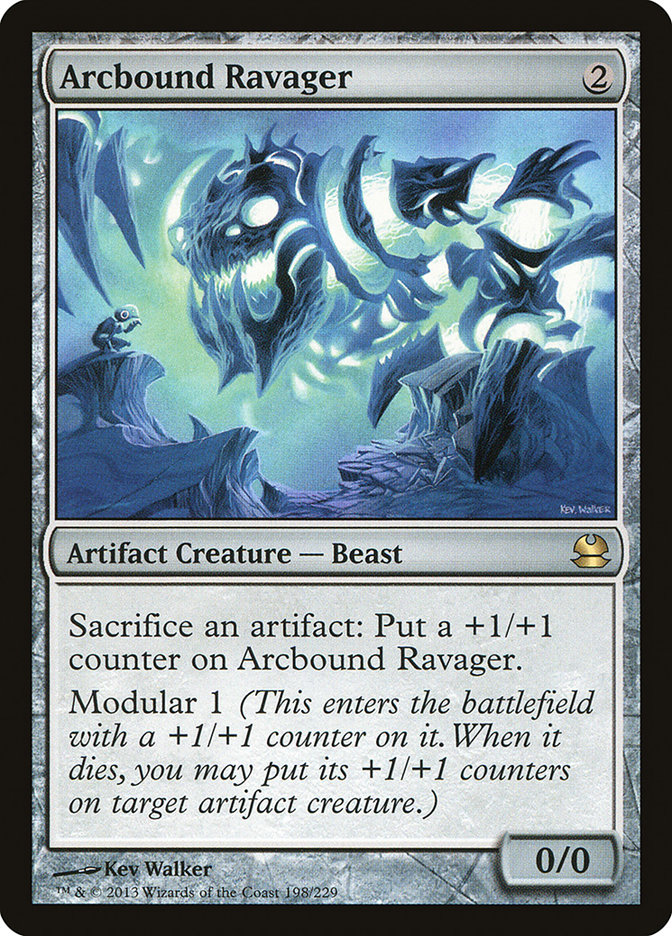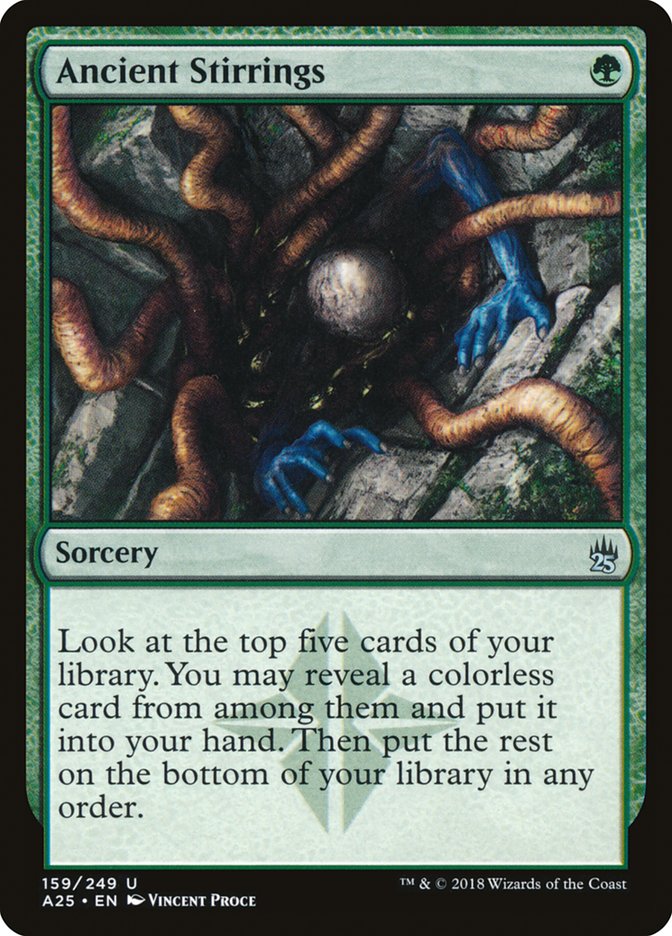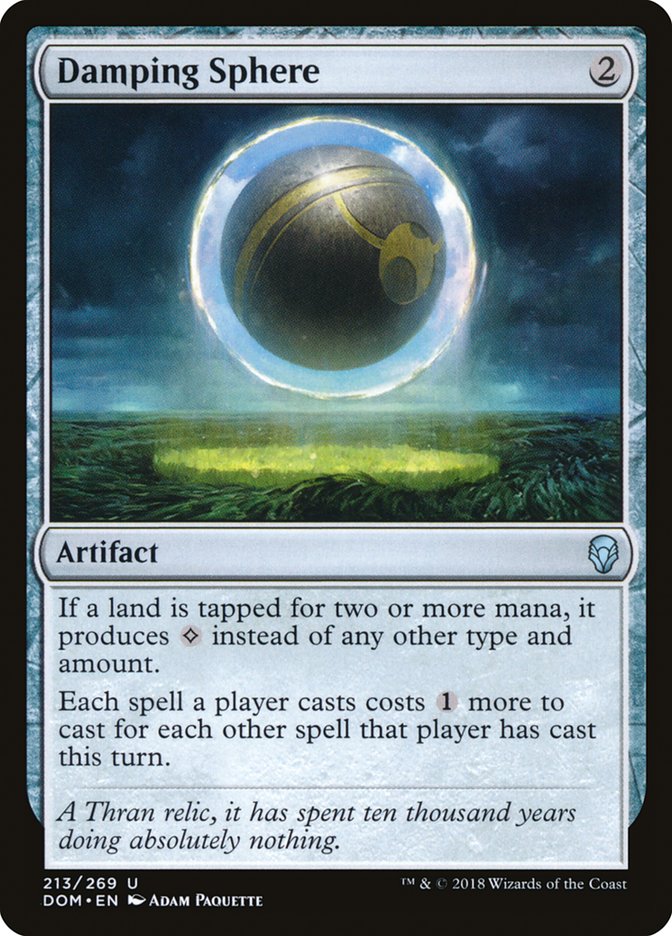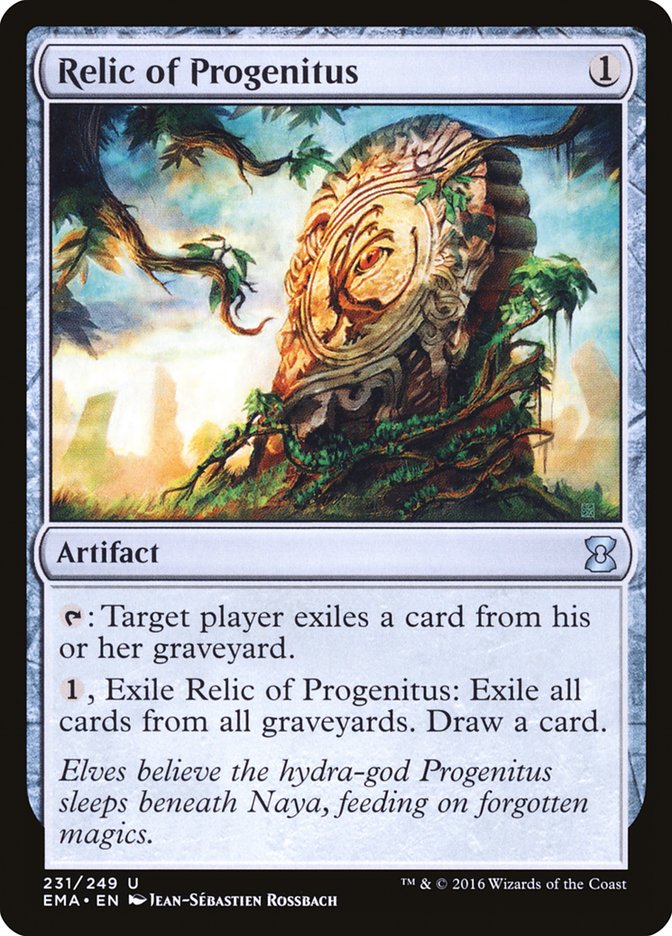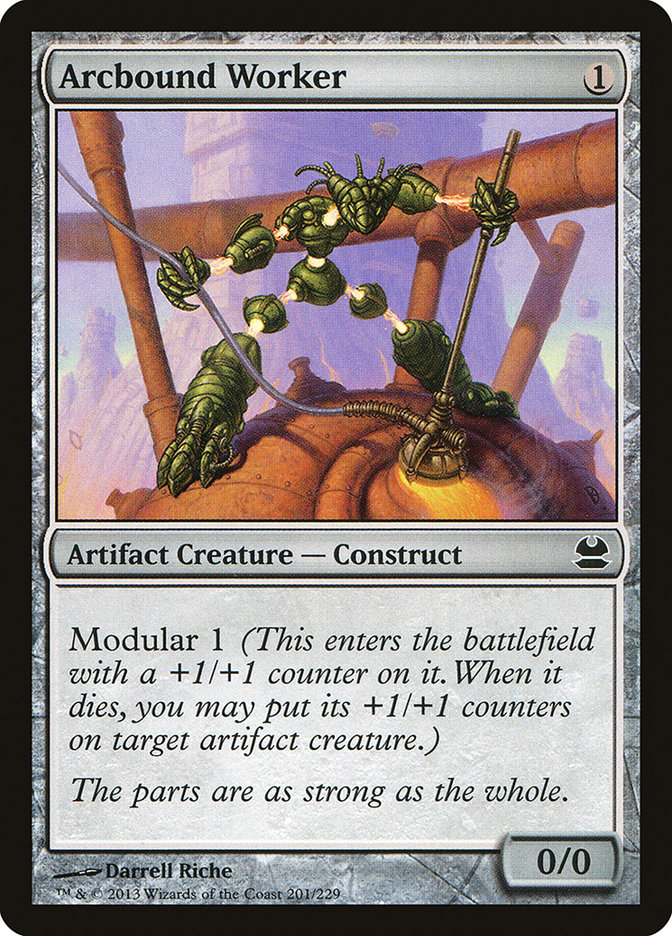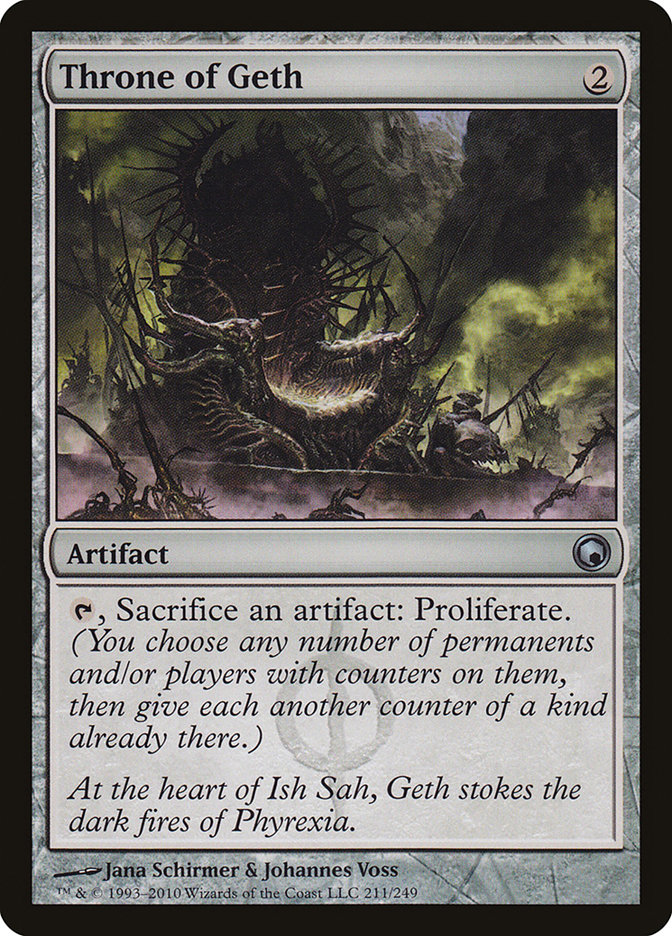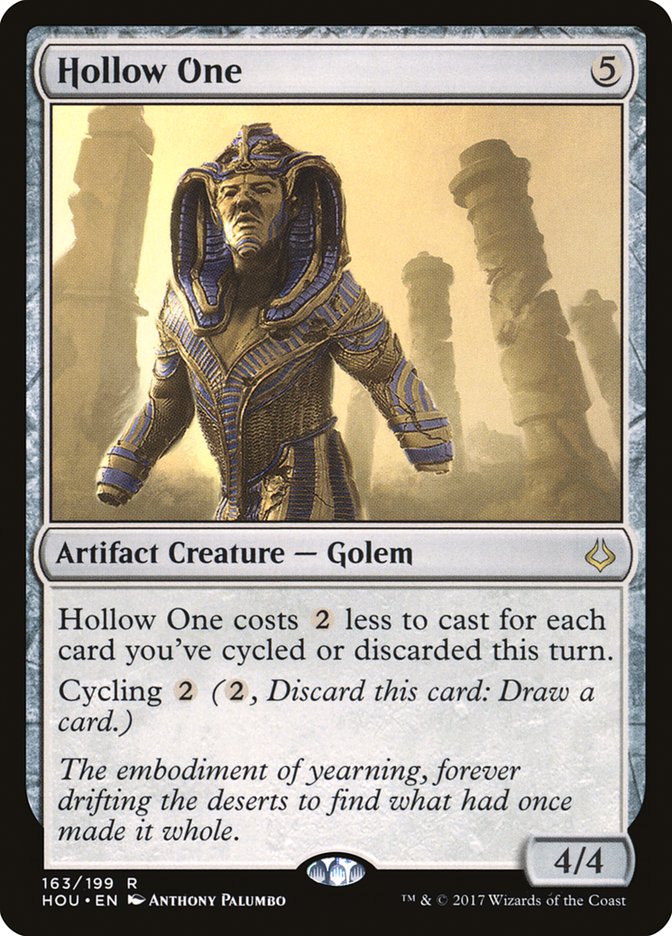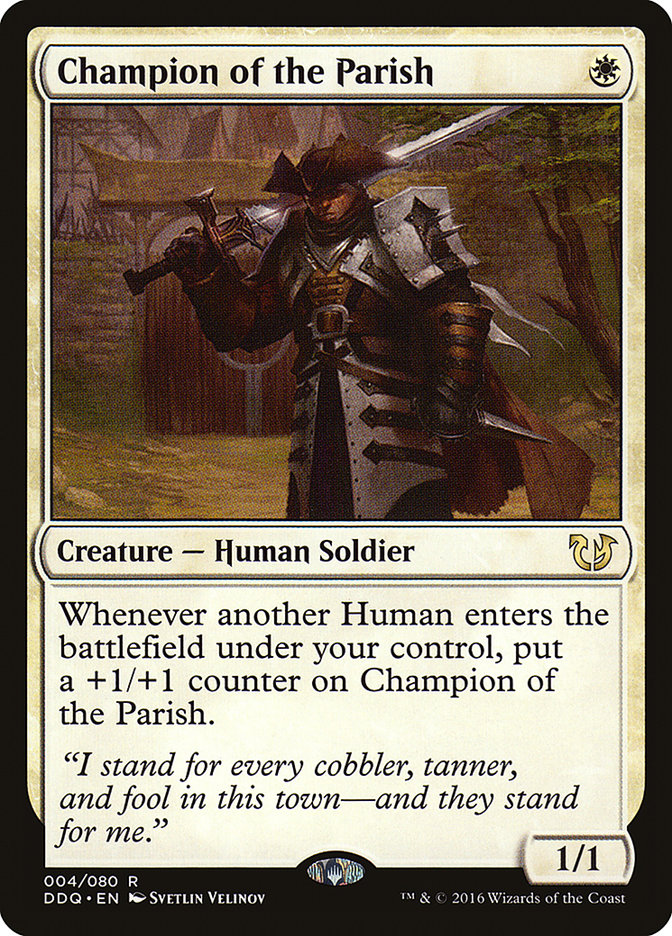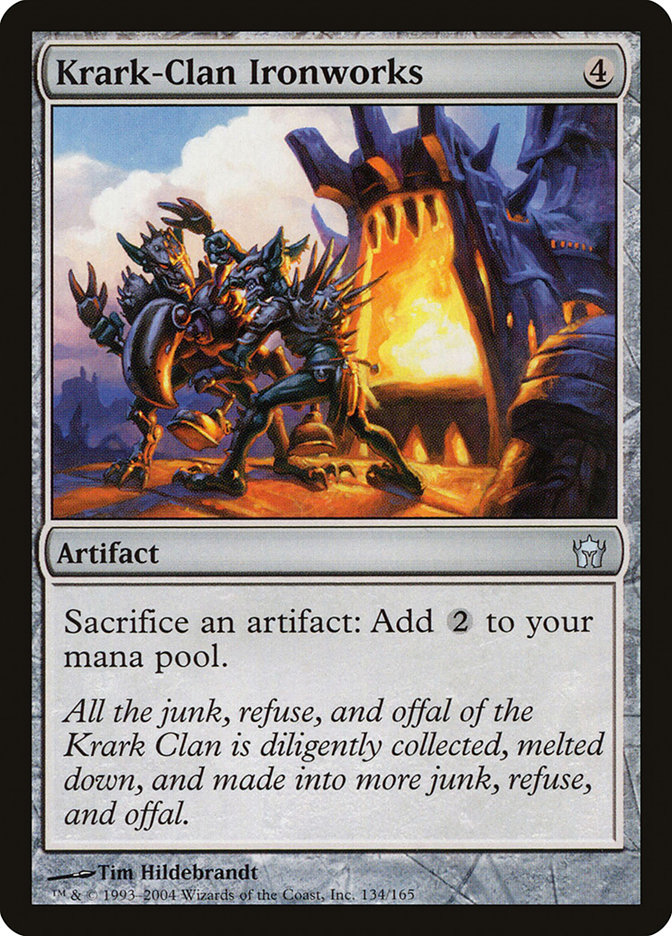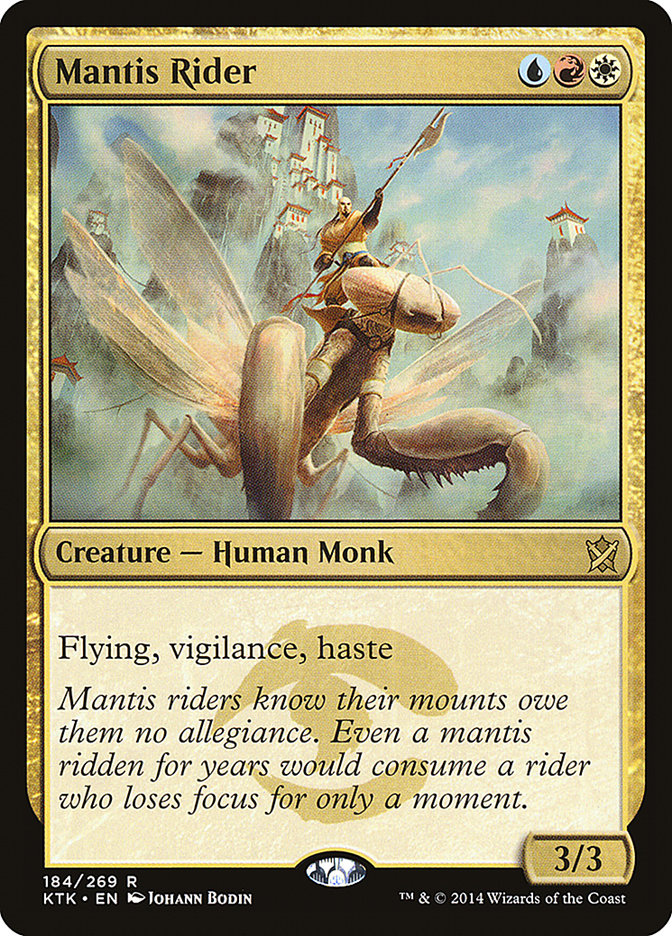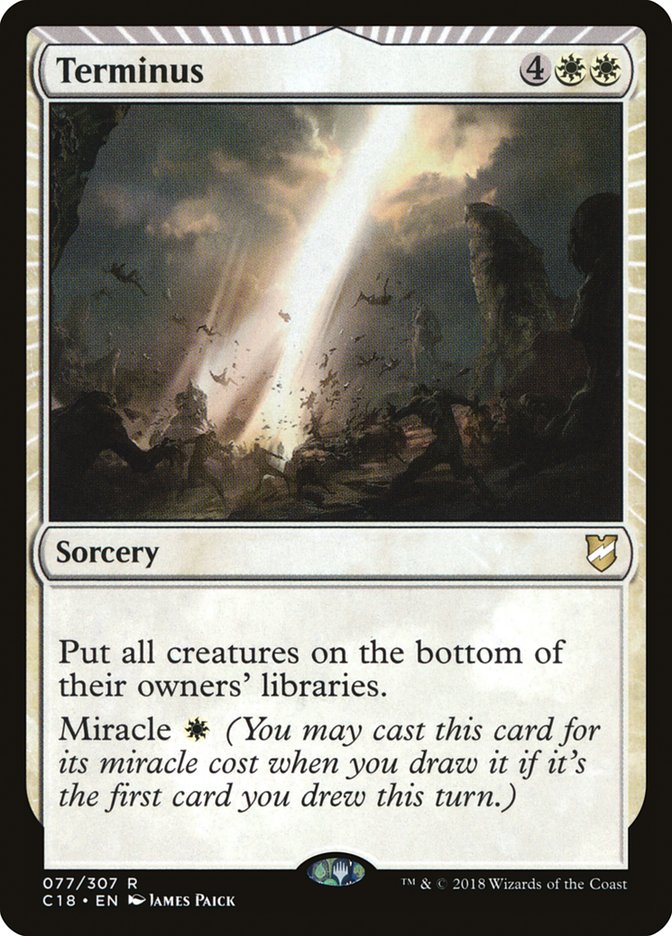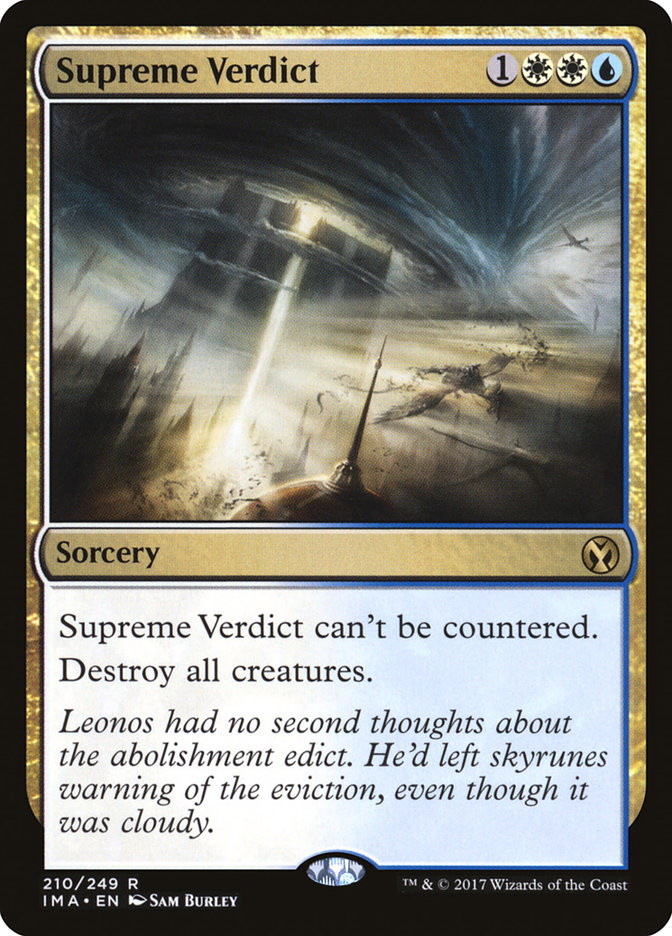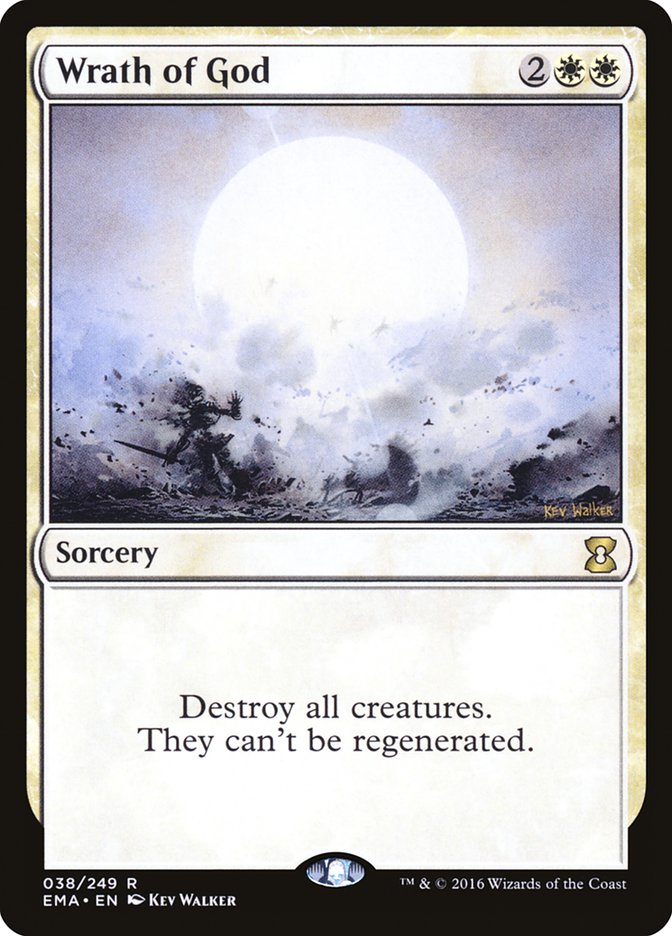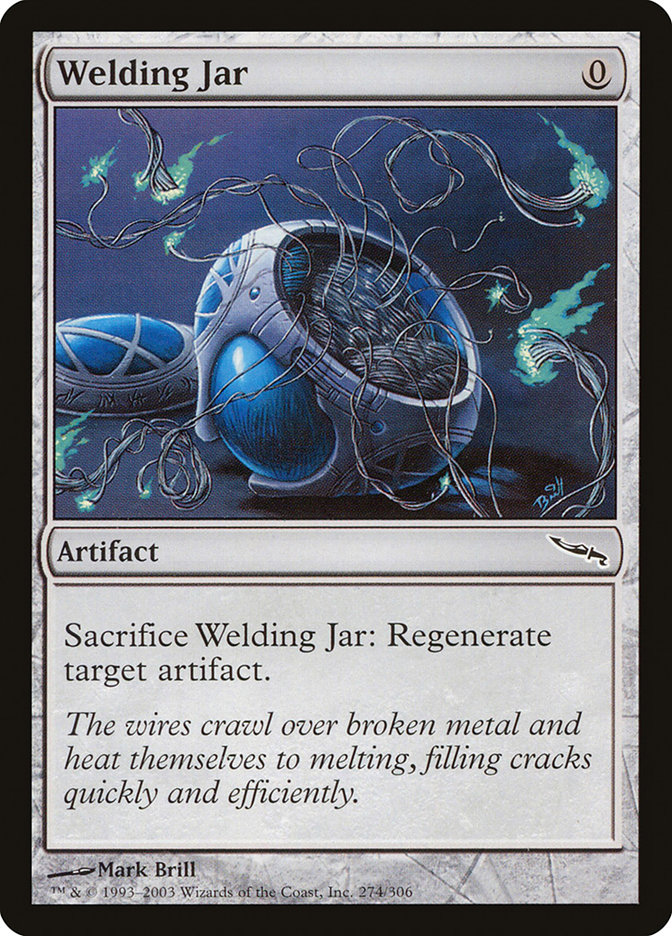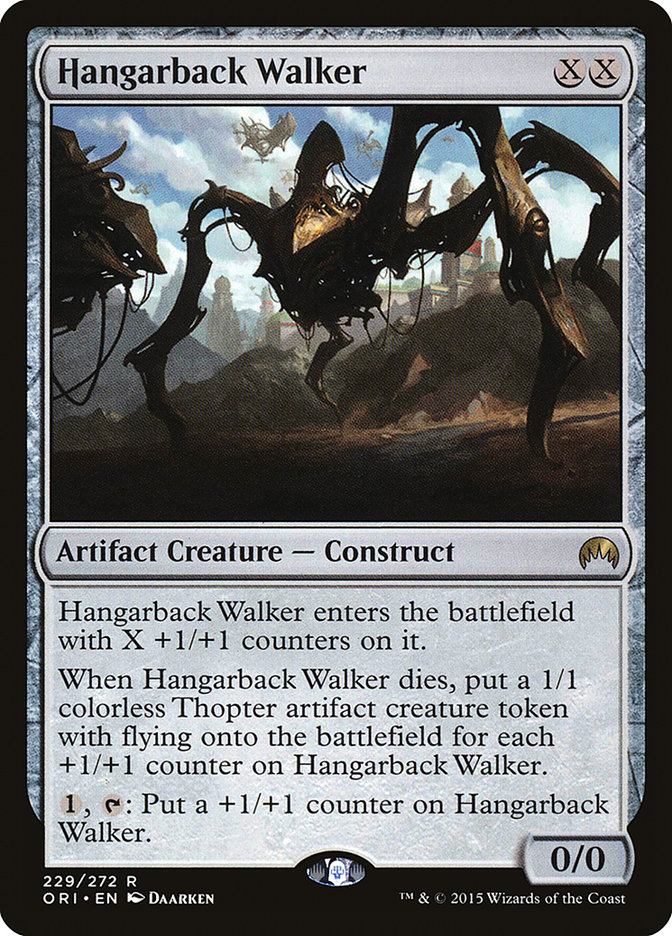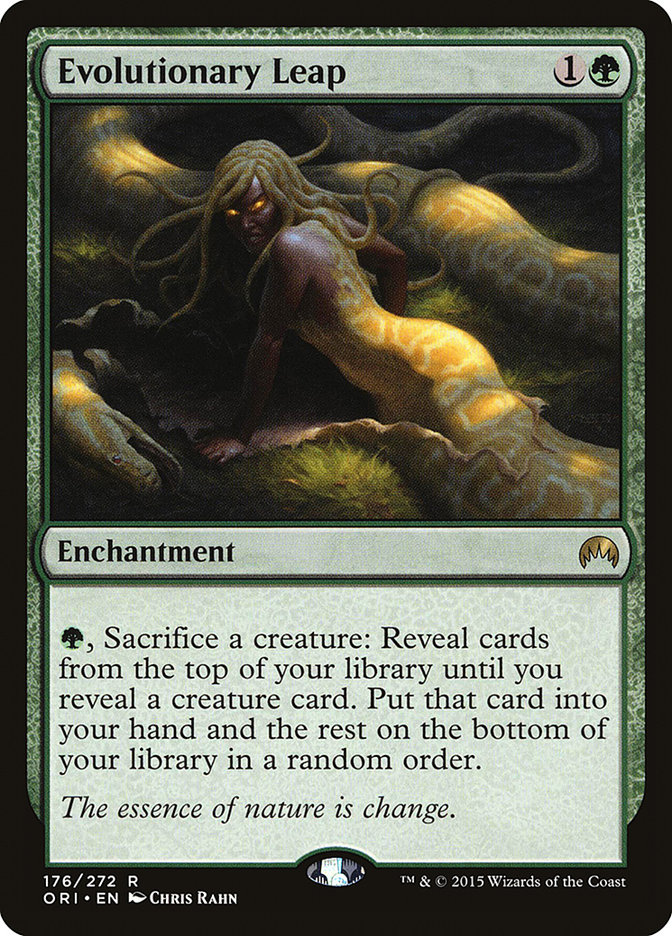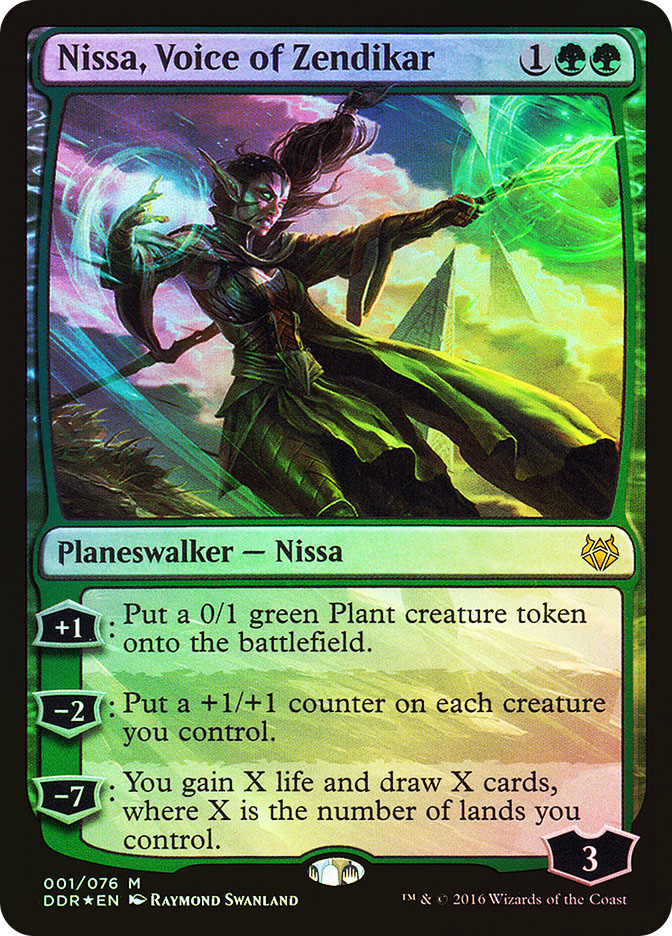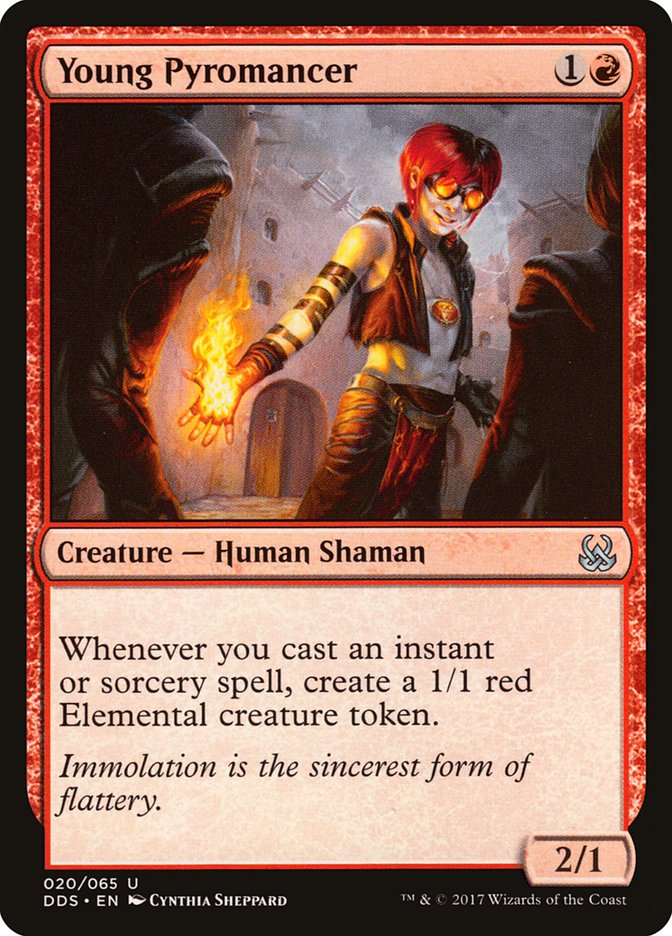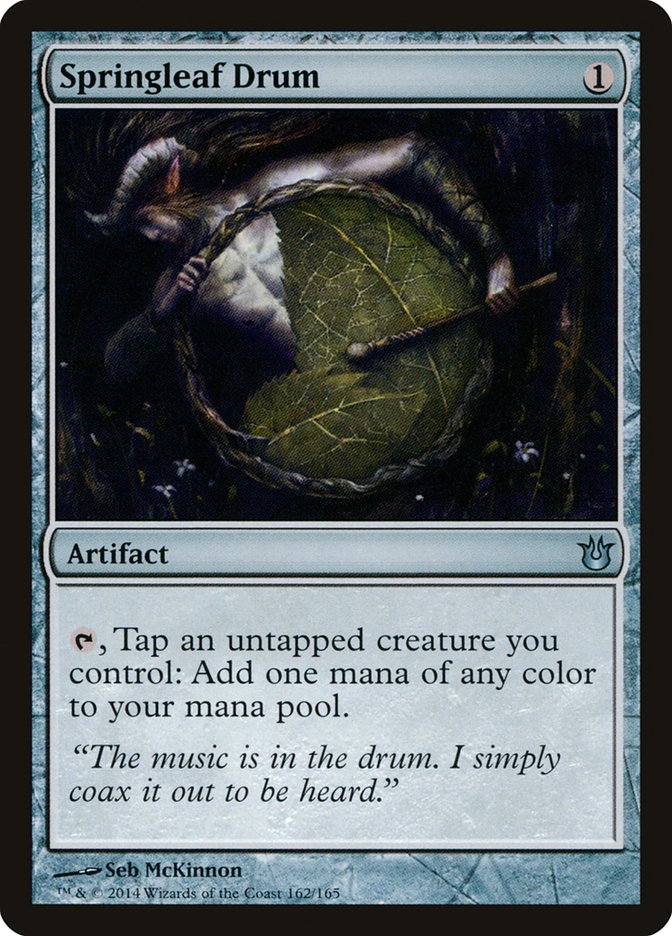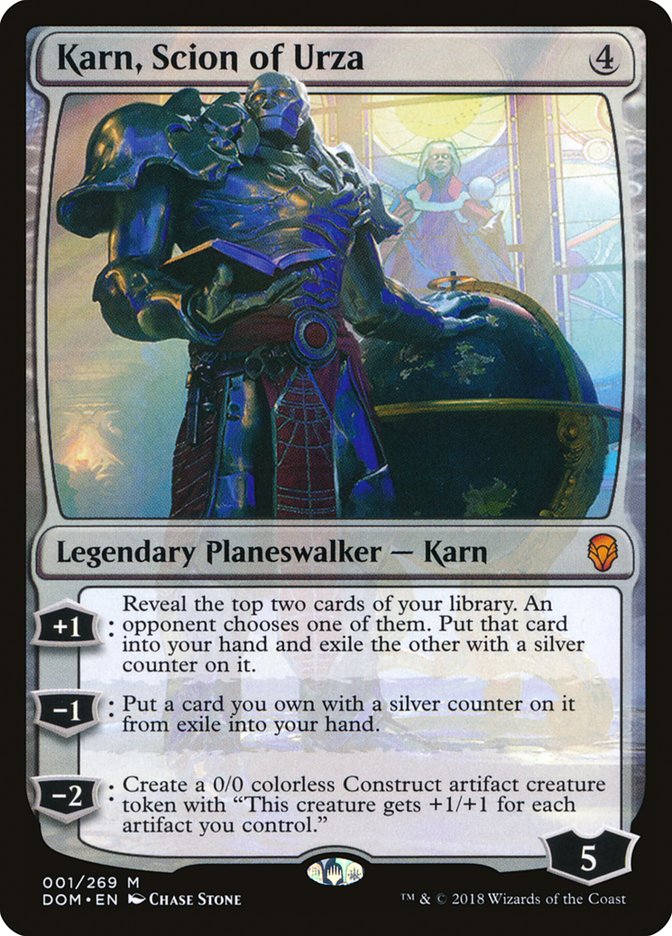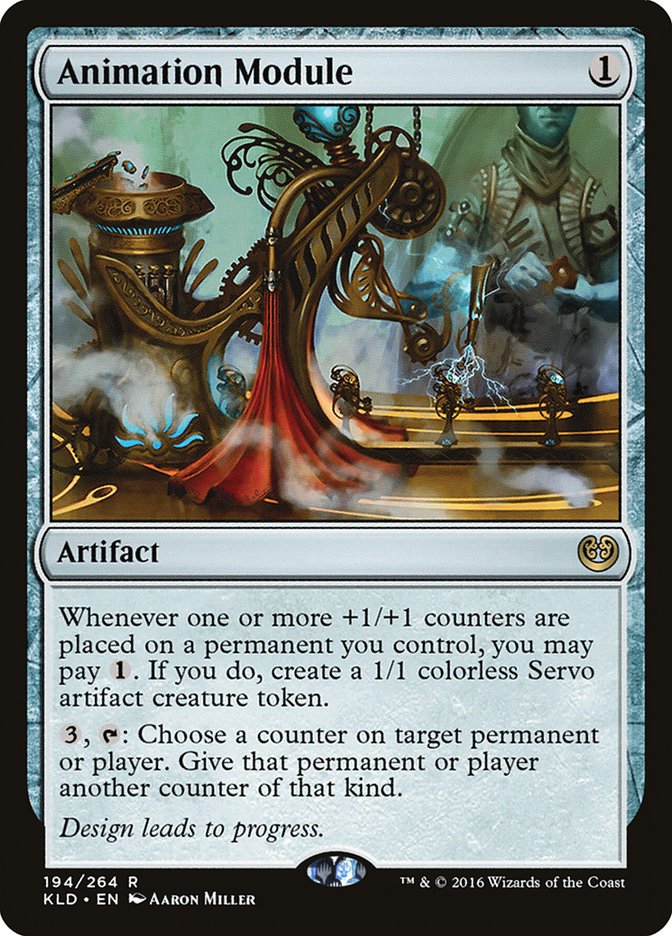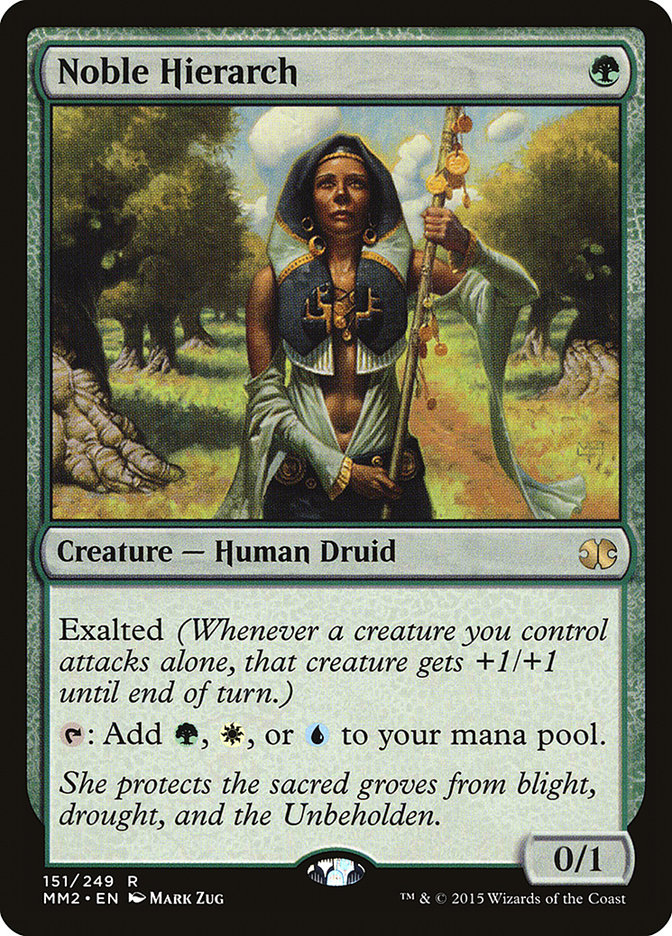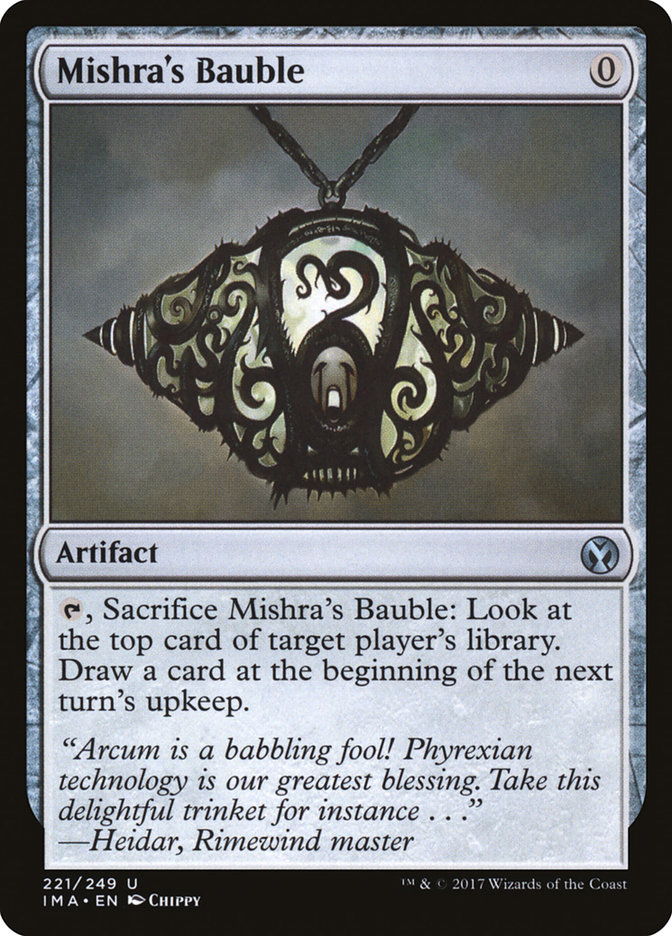When a deck puts three copies into the Top 8 of a Magic Online Championship Series, that’s probably a sign to pay attention.
Hardened Scales Affinity was one of the new decks I put the most time into for Pro Tour 25th Anniversary, and there’s a fair amount to unpack if you want to understand it.
Creatures (21)
- 4 Arcbound Ravager
- 4 Arcbound Worker
- 4 Steel Overseer
- 4 Hangarback Walker
- 4 Walking Ballista
- 1 Sparring Construct
Lands (20)
Spells (19)
- 3 Welding Jar
- 4 Ancient Stirrings
- 4 Mox Opal
- 2 Throne of Geth
- 1 Apostle's Blessing
- 4 Hardened Scales
- 1 Animation Module
Sideboard

On a fundamental level, what is Hardened Scales Affinity doing that makes it good?
The key to Hardened Scales Affinity is doubling the effectiveness of +1/+1 counters. Games end in one of two ways: you can generate a spread of oversized threats, or you can stack a Walking Ballista or Inkmoth Nexus tall and use poison counters or the ping effect for “double damage” and a quick lethal. With Hardened Scales you can double-double, which leads to most of your swift kills.
Being able to go wide and tall in a big way is unique.
The other draw is that Hardened Scales is stacked on threats, in part due to Ancient Stirrings. The threats are all generally good, but often you will have one or two that overperform in the matchup. Ancient Stirrings enters the equation in finding that best card.
The other aspect of Ancient Stirrings is that you get to really maximize hate cards. This happens in a way that Ironworks and Mono-Green Tron can’t quite match, as one of the best hate cards to find is Damping Sphere, which they can’t play for obvious reasons.
While we’re talking about these sideboard cards, let’s cover those matchups using Joao_Andrande’s list as a reference. I’m interested to see how my experiences and opinions compare to this week’s VS Videos, where Hardened Scales runs the Modern gauntlet.
Ironworks
Out:
In:
You’re trying to clock your Ironworks opponent with just enough disruption to stop them. Be aware of your card cost splits against Engineered Explosives, including that Hangarback Walker and Walking Ballista have converted mana cost zero.
A concern here is ensuring you have enough higher-impact threats to actually provide a clock. It’s possible that Hangarback Walker is better than Arcbound Worker or Welding Jar, but it’s close and Jar’s low impact is justified, as your other cards are very weak to Engineered Explosives. I’m also not a huge fan of Surgical Extraction if you have no way of getting Krark-Clan Ironworks in a graveyard that isn’t “Nature’s Claim and then kill them on my next attack,” as it’s largely a two-card combo then, but it’s worth a bit more examination.
Mono-Green Tron
Out:
In:
Your three plans are: try to kill them before they cast Oblivion Stone, kill them the turn they cast Oblivion Stone via Inkmoth Nexus, or cast Damping Sphere right before they Tron and kill them very quickly.
Unlike Ironworks, Tron can just beat Damping Sphere by playing lands into spells for their full cost. That puts real pressure on Hardened Scales Affinity to do more than sit on Welding Jar, and you often find yourself casting multiple spells a turn to race and needing mana to pay your own Damping Sphere tax
As you can tell, Throne of Geth is not a racing card. It’s about battlefield presence and popping your own Hangarback Walkers.
R/B Vengevine
Out:
In:
This might seem like you just aren’t prepared for the matchup, but the opposite might be truer.
Outside of hands that no one beats, R/B Vengevine has issues with decks that quickly scale. A Vengevine can easily fall behind a Steel Overseer and Hangarback Walker. They rely on Bridge from Below to go wide around your threats, and it’s almost impossible for them to get a Bridge engine going against your deck with about a million sacrifice effects. You have Arcbound Ravager, Throne of Geth, Walking Ballista just removing counters, and Hangarback Walker cast for zero. At best they get one burst of Zombies, as you don’t have an instant sacrifice, and must win with that.
They might Leyline of the Void you. Congrats, you’re now playing against a six card hand. Don’t forget Leyline stops modular and Hangarback Walker and win regardless.
Casting Your Spells
A lot of the play decisions in Hardened Scales Affinity comes down to every type of bean counting nonsense, which is one of my favorite things in Magic (just below land destruction and perfect information, in case you were grading my play style villainy).
The first place to start is just casting your spells. Unlike Affinity, you don’t have a surplus of free artifacts to hit two mana on turn one. But just like Affinity, your entire deck costs two mana.
That means in many games your curve looks like “cast a threat on Turn 2, another and an Ancient Stirrings or Hangarback Walker activation, and then two more the next turn.” Threat drops are a little more like land drops, where maximizing combos for mana is rare and just ordering them one by one is the key.
Let’s talk sequencing.
Steel Overseer is almost always the best lead hitter. This should be obvious: it activates more if it’s first, and then they die. There are very rare exceptions where you’re just dying and need a stickier card to establish a defense first.
Hangarback Walker is the second drop in line. It activates to grow, so more activations are good. Duh. The exception is when you’re severely worried about it getting exiled and can lead with a sacrifice outlet. Hangarback Walker also comes ahead of Steel Overseer if on the draw versus Liliana of the Veil without a chump sacrifice.
Walking Ballista is your first threat if you need to use it as removal, usually due to Blighted Agent or Champion of the Parish. There are also times where Hardened Scales plus Mox Opal lets you relevantly curve Ballista, pump it, and machine gun. You will specifically hold it if you want to force profitable trades with removal against tokens or if being able to pump more mana into it next turn is more efficient.
Arcbound Ravager is rarely in a rush to be cast. If your plan is to modular onto something, you can do that the turn you cast Arcbound Ravager. If you lack an Inkmoth Nexus or Walking Ballista for double damage, you may end up in spots where Arcbound Ravager must attack twice for lethal, making it a better lead than Hangarback Walker.
Throne of Geth is usually one of the last cards you cast. There are spots where you’re activating it an exact number of times to add up to lethal where it gets cast earlier, but a Turn 2 Throne of Geth is extremely rare.
Even More Math
Here are a few ways to count to lethal that come up reasonably often.
If you control Inkmoth Nexus and Hardened Scales and then cast Arcbound Ravager, it only takes three other artifacts for lethal infect damage. Ravager starts at two, gets two for each of the three artifacts for eight, and then when it modulars over, another counter is added for nine +1/+1 counters on a 1/1 Nexus for ten Infect. Walking Ballista is the same.
If you have a Sparring Construct or Arcbound Worker in the above scenario as one of the sacrifices, you need one less artifact. Again, modular adds bonus counters.
If you control Hardened Scales and cast Walking Ballista for four mana, just activating and attacking over the next two turns is nineteen damage. It starts as a 3/3, grows to a 5/5 and attacks; and then grows to a 7/7, attacks, and shoots. Five plus seven plus seven equals nineteen.
Shooting your own Arcbound Worker or Sparring Construct with Hardened Scales can modular to add counters to Walking Ballista. I’ve never seen this, but it’s cool.
Just making a 5/5 Inkmoth Nexus can easily be enough to win a game. Don’t forget this.
If you sacrifice a modular creature to Throne of Geth, the modular resolves and then you proliferate those counters. Synergy!
Throne of Geth plus Inkmoth Nexus plus a one counter modular is eight infect in two hits. The first time you animate, sacrifice the modular and proliferate to a 3/3. The second time, you proliferate them to four poison and Nexus to a 4/4. Another Throne of Geth is lethal, or if you got in a single poison that proliferated on the first activation, it’s also lethal.
Why Not Affinity?
I love Affinity. But wow, now is not the time for Affinity.
Affinity’s biggest strength was always that it was a deck that could clock really quickly and disrupt people. It did this a little better than Infect in a slightly more resilient way.
The thing is, all the new top-tier Modern decks also do that. Affinity no longer has uniqueness there. “Resilient, interactive, and fast” set the bar to compete, and Affinity is just a bit worse at it than all the new options. It also isn’t the heads-up winner against any of them.
If Affinity isn’t good, why is Hardened Scales the answer?
One of the issues with Affinity against Hollow One and Humans is that it’s just the smaller creature deck. You make one huge thing via Arcbound Ravager or Cranial Plating and then lose all the subgames of Meddling Mage with a +1/+1 counter versus Memnite.
Hardened Scales Affinity just goes bigger. Beating a 4/4 Hollow One is easy. You just make a 6/6 Hangarback Walker. Your Humans opponent can’t really handle an 8/8 Walking Ballista. This is on top of Steel Overseer draws and Arcbound Ravager plus Inkmoth Nexus, just like normal Affinity.
Instead of Humans or Hollow One having inevitability, Hardened Scales Affinity does. That is huge.
Some tips on those two matchups:
I’m going to largely ignore the games where you or the Humans player just go off and overwhelm the other player. Steel Overseer is still your best card. Their two main ways to turn a game around are Reflector Mage and Mantis Rider.
Reflector Mage is just going to be good, but you can try to stop it from being great. If you have multiple of the same threat, consider trying to cast them in the same turn or sacrificing the first to Arcbound Ravager or Throne of Geth to keep up the pace.
Sideboarding:
Humans
Out:
In:
I’m starting to think Apostle’s Blessing is just bad.
Leveraging chump blockers is big here. You can overpower a Champion of the Parish, but it might take a turn of throwing Hangarback Walker under the bus. Getting a bit of incremental value on a chump is great, hence why Welding Jar is bad, as it only throws away a card to chump. You also need to have a plan for Mantis Rider, but there are a lot of ways between Thopters, Nexuses, and Walking Ballista pings.
Out:
In:
Try to make a 5/5 or 6/6, and then be aware you may need a larger Blinkmoth Nexus to block down a repeating Flamewake Phoenix. Welding Jar is good here, as protecting Steel Overseer from Lightning Bolt is game-winning.
Surgical Extraction doesn’t hold off Gurmag Angler. Don’t do it. This list also might be a little short on answers to Grim Lavamancer, which is probably their best sideboard card these days.
What Doesn’t Hardened Scales Solve?
Holy crap, the U/W Control matchup for this deck is a nightmare.
It isn’t like Affinity isn’t also bad there, but as U/W Control I have lost to a super-fast Karn, Scion of Urza a couple of times. I’ve won somewhere around 80% of my games as U/W Control against Hardened Scales, which translates to literally all of my ten or so matches.
The issue is scale just doesn’t matter against their sweepers. Unlike Humans, you have no way to stop a Terminus. Unlike Affinity, you don’t have sticky Cranial Platings. You also get rolled up by Stony Silence, and sometimes they are just on pace to let them Jace, the Mind Sculptor you with minimal setup.
That doesn’t mean you can’t try, though.
Current lists are trending down on Terminus in favor of split sweepers as a compromise to Meddling Mage. This is big news on a lot of fronts. Maybe Welding Jar can get them, maybe they don’t line up right against Hangarback Walker, or maybe it’s just that their stupid card doesn’t cost one mana and you have a turn of free rein to finish with Inkmoth Nexus or reestablish.
One note on Welding Jar: to save an Inkmoth Nexus from Field of Ruin, it must be a creature. Be aware your opponent is watching for you to tap out to do this.
There are some technical details you can also work with. If you can protect your Hangarback Walker from a Path to Exile, that forces a sweeper. That means casting Arcbound Ravager first or leaving up Nature’s Claim. Technically Throne of Geth also works, but that card is pretty bad when you get punished for extending wide or pushing on a large threat.
You also want to save Walking Ballistas for more damage if possible. Deploying threats is key, but almost anything is better than a 1/1 Ballista dying to a sweeper. The U/W Control player is often carefully leveraging all of their life and loyalty, leaving Walking Ballista as one of the few unique ways to close.
Walking Ballista and other mana sinks are also bolstered by their Path to Exiles and your stack of basic lands, which is sadly a strike against splashes. It isn’t as critical to find basics as it is with Mono-Green Tron, but your splash would need to really change your gameplan from grinding them out to killing the U/W Control player early.
The most effective cards out of Hardened Scales Affinity in the matchup have been Evolutionary Leap and Nissa, Voice of Zendikar, often in tandem. U/W Control has been skimping on Detention Sphere lately, making these cards even harder to handle. Teferi, Hero of Dominaria often dies when it must -3, which is about the best you can expect.
Nissa is more annoying pressure than a standalone game-winner, but Evolutionary Leap is the real deal. It not only forces them to fall behind every time you sacrifice a creature in response to removal, but finds you Walking Ballistas and just goes off with Hangarback Walker. You won’t necessarily outpace a planeswalker, but the fact it is the same range of card velocity as Jace, the Mind Sculptor is absurd.
At least the other “fair” matchups are pretty solid. Hangarback Walker is just the best possible, and unlike Affinity, you largely ignore 1/1 tokens even when Walking Ballista doesn’t clear a path.
Sideboarding against Midrange and Control
U/W Control
Out:
In:
This might be one too many or too few Nature’s Claim effects, as their only non-Stony Silence utility is “protecting” Hangarback Walker from Path to Exile, but also you can’t beat Stony Silence without one. Welding Jar is bad because, even if they aren’t maxing on Terminus, their sweeper split will include Wrath of God. I’m unsure if using one that says “bury” is cooler than the Sixth Edition version on principle or Seventh Edition new art, but regardless of style points, you die.
I’m also willing to consider a second Animation Module being better than some low-impact card as a way to rebuild, but it’s a standalone do-nothing and not something I have significant experience with in the matchup. Try at your own risk.
Apostle’s Blessing can’t name land and save Inkmoth Nexus from Field of Ruin. Bummer.
Jund
Out:
In:
Sacrificing resources to do things that stack on existing resources doesn’t work out against the cardboard-counting Jund deck. Dismembering their Tarmogoyf does, as it buys more time to establish two active threats and grow over their stuff.
Mardu Pyromancer
Out:
In:
I think a slightly differently configured list could easily find better cards than Dismember for the matchup, but Young Pyromancer is still an issue. If Joao_Andrande had access to Relic of Progenitus instead of Surgical Extraction, I would want those and only one Dismember, shaving Sparring Construct and similar stuff.
This is also the matchup where timing Walking Ballista for exchange value is the most important. Don’t just run it out there as a standalone threat unless it’s the topdeck phase.
Build Margins
To keep up the comparison to Affinity, one of my main criticisms of Hardened Scales is that it just doesn’t have the early-turn zip Affinity does. When you win, it’s usually just by good margins and not utter dominance. If I’m working on any Modern deck and see this, I’m going to ask what more I can do.
There are a few flex slots to work with, and a lot of things have been tried. Plus, it’s not like you need Sparring Construct or Welding Jar, even if you don’t start really remodeling the core engine.
I tried Springleaf Drum to see if I could bring back some of the explosiveness, but it suffered a lot of the same issues Mox Opal has in an all-two-drop deck except it cost a mana. You don’t have the zero-drops to deploy Drum and another one-drop Turn 1, a Turn 1 Drum into a Turn 2 threat usually doesn’t let you double up relevant plays, and it isn’t a mana source for when you deploy an XX creature on a clear battlefield.
Karn, Scion of Urza is a great card, but I’m not sure it’s what this deck wants. The entire Hardened Scales deck is already playing the medium-speed, high-power game Karn represents. Karn is great in Affinity because it adds an entire grindy angle on its own and you can often slip it in under countermagic with your fast mana. Here it’s just a high-end doofus.
Animation Module is super-adorable with Arcbound Ravager, as each sacrifice lets you make a new artifact Servo, but it feels borderline win-more. If I activate Steel Overseer once, do I really need to make it even better then next time?
Maybe against Humans or Hollow One this is a bit true, as it turns a game they might be able to wiggle out of into a complete disaster where they aren’t going to be close to breaking through. I’m fine with Animation Module as that effect, but I’m looking for something a bit more.
While the anti-control cards I mentioned have seen play in maindecks, they don’t actually change your win percentage enough there to be worth it. Maybe a different configuration ends up making more out of them, but for now I would sideline them.
There are three options I want to try:
- Noble Hierarch was the card I used to turn Infect from an awkward three-color pile into the fastest deck in the format six years ago. It doesn’t quite hit everything perfectly here the same way, but it’s probably better than Springleaf Drum. This probably enables a splash too.
- Mishra’s Bauble is a good zero-cost artifact to tune up Mox Opal with. This addition would require fetchlands to be added, but in turn that means you get to splash.
- Maindeck Relic of Progenitus is another old-time favorite plan of mine. I’m unsure the metagame calls for it right now, but it’s been amazing in other decks doing the same big-but-slow thing Hardened Scales Affinity does.
Overall, it feels like there’s a lot of room for development with this deck. Right now, Hardened Scales Affinity is merely good enough, but it feels close to more. I doubt the fundamentals will change, but there’s been basically one agreed-upon list without real iteration.
If you want a fine deck to play right now, Hardened Scales will do that, but if you want a project to work on, it might just be the best place to put your time in Modern.


